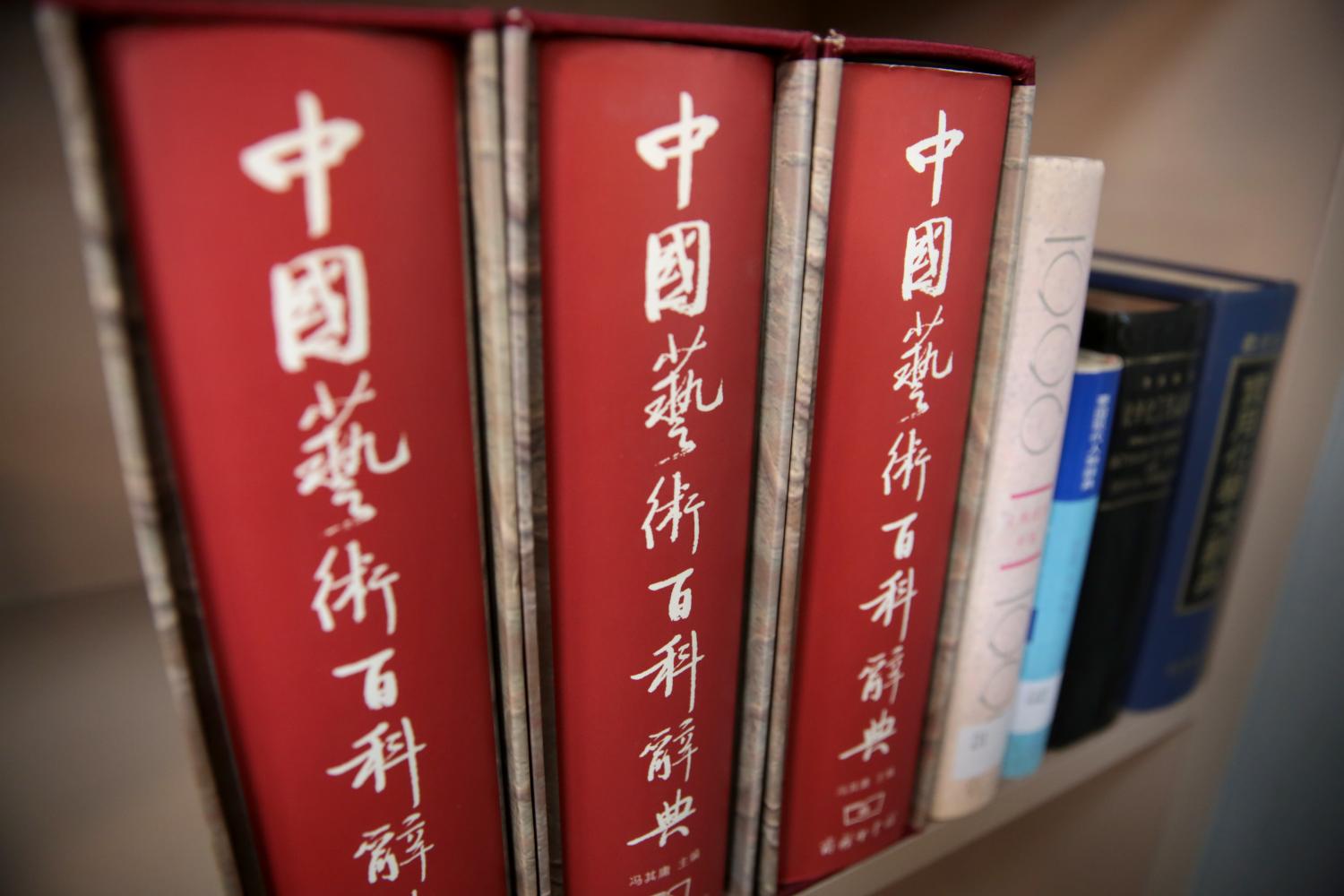
Visitors who walk into the Pridi Banomyong Learning Centre at Thammasat University's Tha Prachan campus might think they are entering a study room in China.
The entrance area wall is painted grey, the signature tone of clay brick used in China since ancient times. Nearby are four small rooms which serve as a co-working space and the ceiling is decorated with mobile features in the shape of floating clouds.
The walkway leads to a circular shaped entrance gate known as "Moon Gate", a signature feature of Chinese architecture mostly found in mansions of the Chinese elites. Past the gate is a small reading room with a wall insulated with noise-absorbent materials.
The decoration of the Pridi Banomyong Learning Centre is based on traditional architecture to pay homage to Chinese culture, according to Nitinant Wisaweisuan, the dean of Pridi Banomyong International College (PBIC) at Thammasat University.
Officially opened on Thursday, the learning centre houses more than 2,000 books. An ambitious target to acquire an additional 10,000 items by the end of 2020 has been set.
All the books are about China. Most are in Chinese yet there are several also written in other languages -- English, Thai and Hindi.

FOR BOOKWORMS: The centre has more than 2,000 books on Chinese studies including dictionaries and textbooks.

GREAT DIVERSITY: The centre has books on Chinese subjects ranging from ancient culture to modern literature.
The collection came from various sources -- the university, donations from personal collections, and as gifts from the Chinese government and the Embassy of the People's Republic of China in Thailand.
"We are sowing seeds of knowledge which will grow to trees of knowledge in the future," Asst Prof Nitinant said.
The centre takes pride in its modern Chinese literary collection and other rare publications and calligraphy prints.
It has the entire collection of literary works by Lu Xun, a late prominent figure of modern Chinese literature.
Known as a trailblazer for left-wing writers, Lu Xun passed away more than 80 years ago. The writer was said to have many admirers and his work inspired them politically. Among his admirers was Mao Zedong.
The centre has quite a few rare reprinted editions of his work published in 1980 as well as his famous works, Ah Q and A Madman's Diary, said Usanee Lertrattananon, a lecturer at PBIC's Chinese Studies Programme.
"Lu Xun's collection of literary works includes rare items we have acquired," Ms Usanee said. "It was published in 1980, the latest we can find. We received almost all series of the complete 16-book set, except the ninth and the tenth."
Ms Usanee said the publications must be handled with care.
"Take a look at this collection of drawings. It was published in 1987. You can see their brittle yellow pages, so we have to handle them carefully," she said about a rare print, known as the Sage's Traces Pictures of Confucius that used a traditional book-binding method sewn by thread and covered by silk.

TOUCH THE MOON: The decoration of the new centre is based on traditional architecture.
The centre also has an impressive collection of English translated versions of Chinese gems of literature.
They are a must-read for Chinese culture and literary enthusiasts such as Cao Xueqin's A Dream of Red Mansions, Sunzi's The Art of War, Mencius's works, and several anthologies of Chinese stories in all historical periods.
MORE THAN BOOKS
Tej Bunnag, the former foreign minister and ambassador of Thailand to China in 1986-1990, said the centre is a testament to time-honoured bilateral ties between the nations.
"We established diplomatic relations with China in 1975. At that time, we didn't have any resources. I had to learn Chinese language and culture from English books. This new facility shows a stronger interest in China," he said.
Mr Tej said the popularity of Chinese studies in Thailand is influenced by its rising global power. "In the past, American studies was the most popular programme.
"However, I think Chinese studies will be the most popular choice for Thai and international students here," he said.
The former foreign minister said the new learning centre will allow students to immerse themselves deeper in the field of Chinese studies.

NOSE DOWN: Usanee Lertrattananon, a lecturer at PBIC's Chinese Studies Programme flips through pages of prints.

HEADS IN THE CLOUDS: Located at Thammasat University's Tha Prachan campus, the Pridi Banomyong Learning Centre opened last Thursday. Its architecture — featuring cloud mobiles — provides a tranquil setting for learning.
"We are now living in the digital world where information can be accessed via our mobile phones. Even the Inscription Tablet of King Ramkhamhaeng the Great has been digitised.
"However, it is important that we experience books and other items first-hand. Besides an exchange programme, the new facility will support students tremendously because they can work and relax here," he said.
Similarly, Thawithak Kitjanukit, a calligraphy artist, said the learning centre will expand the lens of students pursuing China studies.
"Like other languages, Chinese is full of nuances and hidden meanings.
"With more resources, they will have more opportunities to improve their skills in Chinese language and culture," he said.